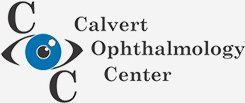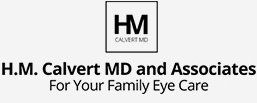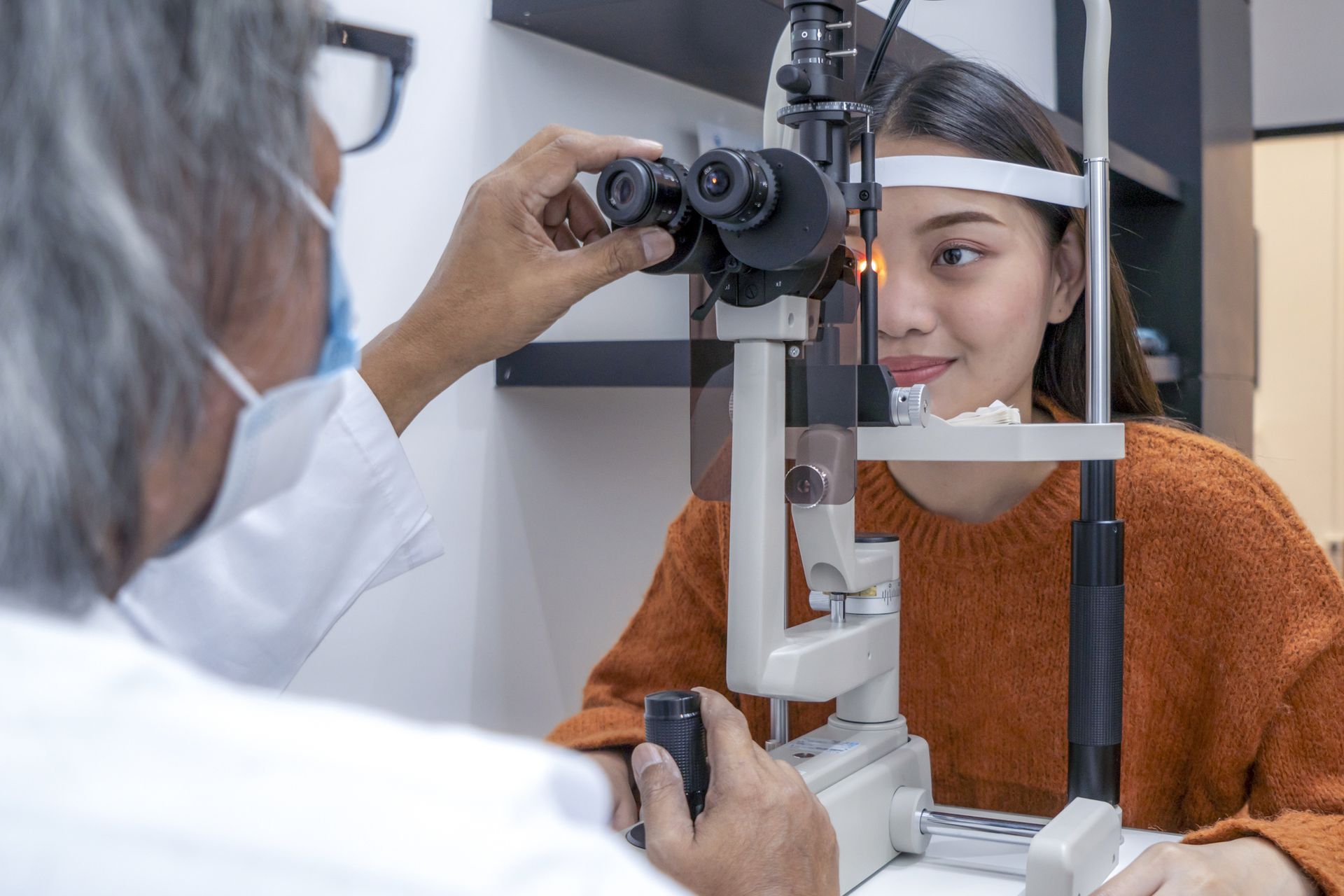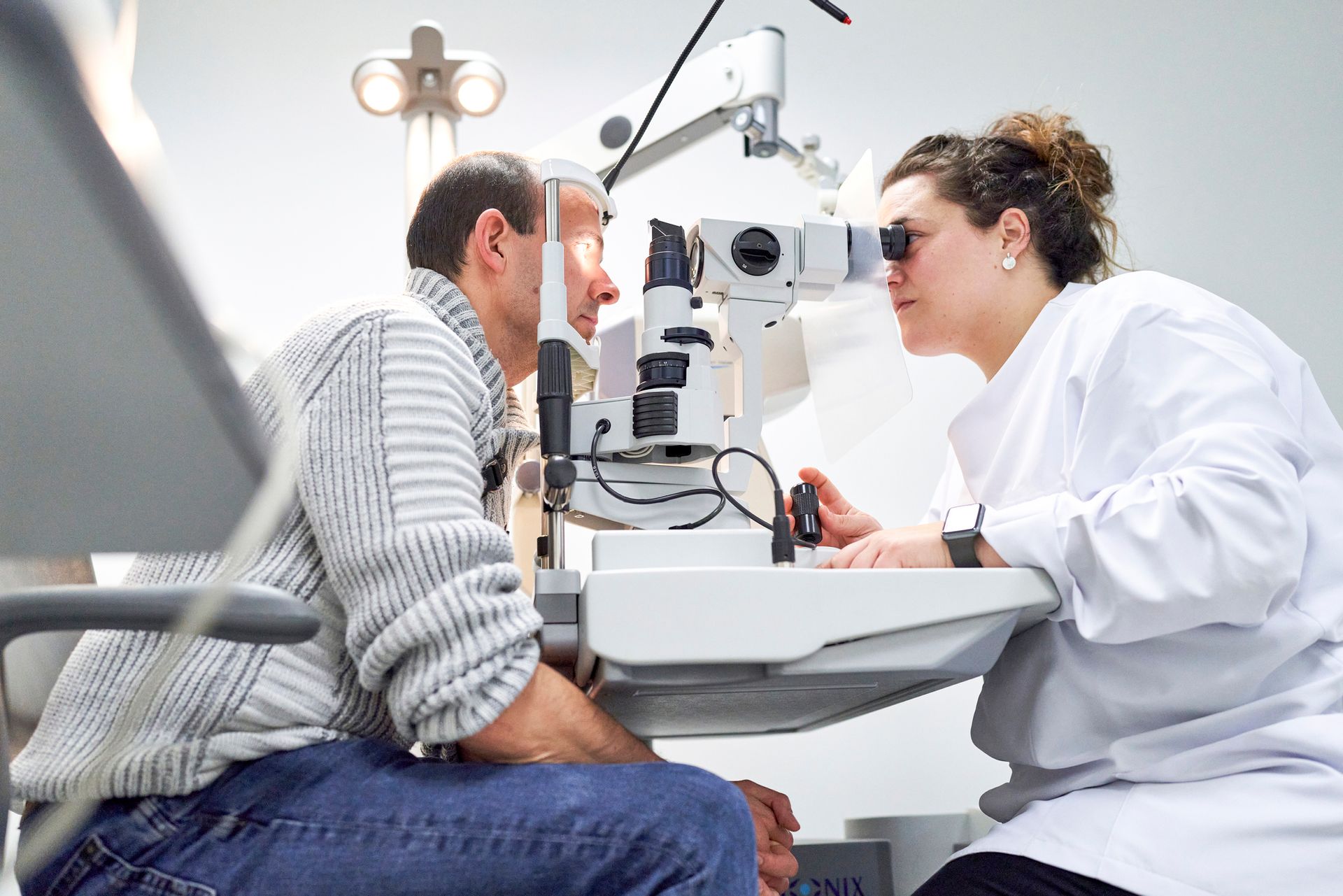What Do You Need to Know About Astigmatism?

Astigmatism affects one in every three people, according to the American Academy of Ophthalmology. If you were recently diagnosed with this refractive error, look at what you need to know about your eyes and astigmatism.
Basics of Astigmatism
What is astigmatism? This eye issue falls into the refractive error category. Other refractive errors include myopia (nearsightedness) and hyperopia (farsightedness). A refractive error occurs when the typically smooth and curved cornea and lens aren't even. The unevenness doesn't allow the eye to bend light correctly, blurring or changing vision.
Types of Astigmatism
Three primary types of astigmatism exist. The normal cornea is round, while the astigmatic one is shaped more like a football. The meridians, which measure the curvature of the eye, indicate which type of astigmatism is at fault for your vision changes. These include:
- Myopic. At least one of the eye's principal meridians is nearsighted. Even though myopic astigmatism is a form of nearsightedness, you can have myopia without the added curvature issue.
- Hyperopic. Like the name implies (based on hyperopia meaning farsighted), one or two of the meridians are farsighted. Again, you can have farsightedness without an astigmatism.
- Mixed. Some vision patients have a combination of near- and farsighted astigmatism.
Symptoms of Astigmatism
Knowing what to look for can make get help for your eye issue early easier to do. The sooner you visit the eye doctor and get professional help, the better you'll see and feel. The most common astigmatism symptoms include:
- Squinting. Like with non-astigmatism-related near- and farsightedness, seeing clearly isn't easy with this refractive error. You may need to squint to see clearly (without the use of glasses).
- Headaches. Squinting and added eyestrain can result in headaches. If you have unexplained headaches, and a medical professional has ruled out all other causes, an eye exam may reveal a refractive error.
- Distorted vision. Astigmatism causes blurred or distorted vision.
- Decreased night vision. You may find it challenging to see well at night when driving.
Treatment for Astigmatism
Even though this refractive error can get in the way of your clear vision, it's a correctable eye issue. Like with a diagnosis, astigmatism requires an eye care professional for treatment. The specific treatment you choose depends on several factors, such as the degree of error, your medical needs, and personal preference.
The common treatments for regular astigmatism include:
- Eyeglasses. Glasses are an easy way to correct your vision issue. The last two numbers of your prescription refer to the cylinder (degree of astigmatism) and axis (where on the cornea the error is).
- Contact lenses. Gone are the days when contact lenses couldn't correct, or correctly fit, astigmatism. Talk to your eye care professional about what contacts will feel most comfortable for your astigmatic eyes.
- Surgery. Refractive surgery changes the cornea's shape, improving the astigmatism. Surgery eliminates the need for corrective lenses.
Do you have symptoms of astigmatism? Don't wait to get expert help with your vision issues. Contact Calvert Ophthalmology Centerfor more information on evaluation and treatment options.













